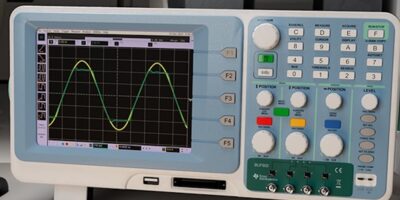Buffer amplifier saves design time for data acquisition systems
Test and measurement engineers can save months of design time using the BUF802, which is claimed to be the industry’s widest bandwidth, high input impedance (Hi-Z) buffer amplifier. Available from Texas Instruments it is capable of supporting frequency bandwidths up to 3GHz. This bandwidth was only possible by using ASICs, which can increase system design time, complexity and cost. By eliminating ASICs, designers who use the BUF802 can get to market faster while achieving a wide dynamic range at a fraction of the cost, said TI.
The wide bandwidth and high slew rates enable higher signal throughput and minimal input settling time, claimed the company. Designers can leverage its faster throughput to measure higher-frequency signals more accurately in test and measurement applications including oscilloscopes, active probes and high-frequency data-acquisition systems.
Previously, alternatives to ASIC-based design implementations required dozens of discrete components such as field-effect transistors (FETs), protection diodes and transistors. These discrete, FET-input amplifier-based implementations add to a design’s bill of materials (BoM) cost and system complexity and are unable to deliver the same bandwidth as ASICs, thus limiting the signal throughput of data-acquisition applications, explained TI.
The BUF802 provides a single-chip alternative to ASICs or FET-input amplifier-based implementations by integrating the features of discrete components while providing 10 times wider bandwidth than FET-input amplifiers, matching the performance of custom ASICs.
The amplifier is believed to be the industry’s first buffer to enable quiescent current adjustment for a range of bandwidth and signal swing requirements, from 100MHz to 3.0GHz at 1.0V peak to peak (VPP) and as high as 2.0GHz at 2.0VPP. This wide adjustment range for bandwidth and signal swing allows designers to scale front-end designs across multiple data acquisition applications.
Integrated functional modes allow engineers to use the BUF802 as a standalone buffer or in a composite loop with a precision amplifier like the OPA140. As a stand-alone buffer, it can help achieve high input impedance and high slew rates in applications that can tolerate 100mV offsets or where the signal chain is AC-coupled. In a composite loop, it can achieve high DC precision and 3.0GHz bandwidth in applications requiring 1 microV per degree C maximum offset drift.
The BUF802 is available in a 3.0 x 3.0mm 16-pin very thin no-lead (VQFN) package. TI has also introduced the BUF802RGTEVM evaluation module.




